Quartz countertops have become a popular choice in modern kitchens and bathrooms due to their durability, aesthetic appeal, and low maintenance requirements. They are engineered from a combination of natural quartz and resin, making them highly resistant to stains, scratches, and heat. Unlike natural stone countertops such as granite and marble, quartz countertops are non-porous, which means they don’t require sealing. This characteristic makes them an ideal choice for high-traffic areas like kitchens, where spills and messes are common. Quartz countertops come in a wide range of styles, each offering unique colors, patterns, and textures to suit various design preferences. Whether you prefer a minimalist, modern look or a more traditional, ornate aesthetic, there is likely a quartz countertop style that fits your taste.
One of the most popular styles is the marble-look quartz. This style mimics the elegant veining patterns of natural marble but offers the practical benefits of quartz, such as increased durability and ease of maintenance. Marble-look quartz countertops are perfect for those who love the luxurious appearance of marble but don’t want to deal with its susceptibility to stains and etching. The veins can range from soft and subtle to bold and dramatic, allowing homeowners to customize the level of contrast and visual impact. These countertops are often paired with white or neutral-toned cabinetry for a timeless, classic look.
For a more contemporary feel, solid-color quartz countertops are an excellent choice. These countertops are available in a variety of bold hues, such as black, white, gray, and even bright colors like blue or green. Solid-color quartz countertops work well in modern or minimalist kitchens, where clean lines and simplicity are key. The uniform color creates a sleek, uncluttered appearance, making it an ideal option for those who prefer a more streamlined, minimalist design. Black quartz, in particular, adds a touch of sophistication and can be paired with lighter cabinetry to create a striking contrast.
Textured quartz countertops are another emerging trend that adds a tactile element to your space. These countertops feature a variety of finishes, such as matte, honed, or leathered, which offer a unique feel and appearance compared to the traditional polished finish. A honed finish provides a soft, matte look that works well in rustic or farmhouse-style kitchens, while a leathered finish gives the surface a more rugged, textured appearance, perfect for industrial or eclectic designs. Textured quartz countertops add depth and interest to a space, making them a great option for homeowners looking to incorporate a bit of character into their kitchen or bathroom.

Quartz countertops with integrated veining or patterns that mimic the look of natural stone have gained popularity in recent years. These countertops feature intricate patterns and veining that give them a more natural, organic appearance. Whether it’s a subtle vein running through the slab or a more pronounced pattern, this style allows homeowners to enjoy the beauty of natural stone without the high maintenance. The integrated patterns are often highlighted in neutral or earthy tones, making them versatile enough to complement various design aesthetics, from traditional to modern.
For those who want a truly unique countertop, custom quartz designs are available. Some manufacturers offer the option to create custom colors, patterns, and even inlays that can reflect your personal style or complement specific elements in your kitchen or bathroom. Custom quartz countertops are a great way to create a one-of-a-kind look that will stand out. Whether you want to incorporate metallic flecks, unique textures, or specific colors, customization allows you to have a quartz countertop that is tailored specifically to your preferences.
Recycled quartz countertops are an eco-friendly option for those looking to incorporate sustainable materials into their home design. These countertops are made from recycled materials, such as glass, ceramic, and porcelain, combined with quartz. Not only do they offer the same durability and low maintenance as traditional quartz countertops, but they also reduce waste by repurposing materials that would otherwise end up in landfills. Recycled quartz countertops come in a variety of colors and styles, making it easy to find a design that fits your aesthetic while also being environmentally conscious.
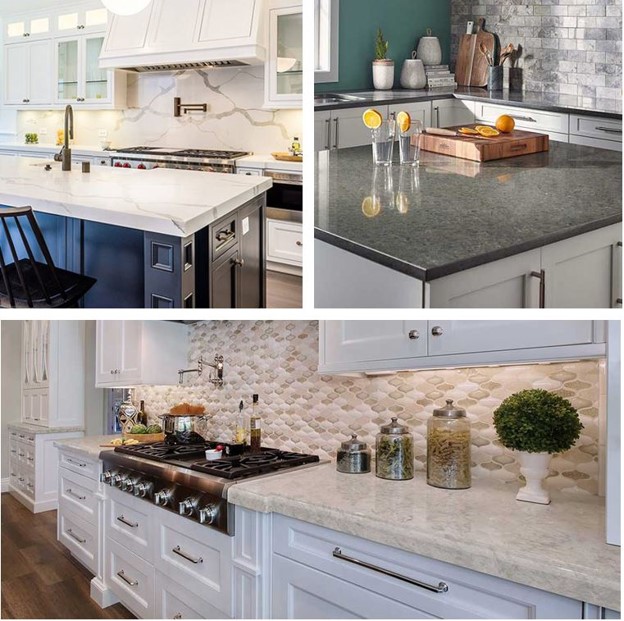
Another style worth considering is quartz countertops that feature a waterfall edge. In this design, the countertop material extends vertically down the sides of the cabinets, creating a seamless flow from the surface to the floor. Waterfall edge quartz countertops are a bold, modern design statement that adds visual interest and sophistication to your space. They are often used on kitchen islands to create a focal point and provide a sleek, continuous look that enhances the overall design of the room.
Veined quartz countertops are also a popular choice for homeowners who want to incorporate a touch of nature into their design. These countertops feature delicate veining that mimics the look of natural stone, such as marble or granite. The veins can vary in color and intensity, giving each slab a unique look. Veined quartz countertops work well in both traditional and modern kitchens, depending on the color and style of the veins. Lighter veining can create a soft, elegant look, while darker veins add drama and contrast.
For a more industrial look, concrete-look quartz countertops offer the rugged appearance of concrete with the practical benefits of quartz. These countertops are perfect for homeowners who want to achieve an industrial or urban design aesthetic without the hassle of maintaining real concrete. Concrete-look quartz countertops often feature subtle texture and color variations that mimic the raw, unfinished look of concrete, adding an edgy yet sophisticated touch to your kitchen or bathroom.
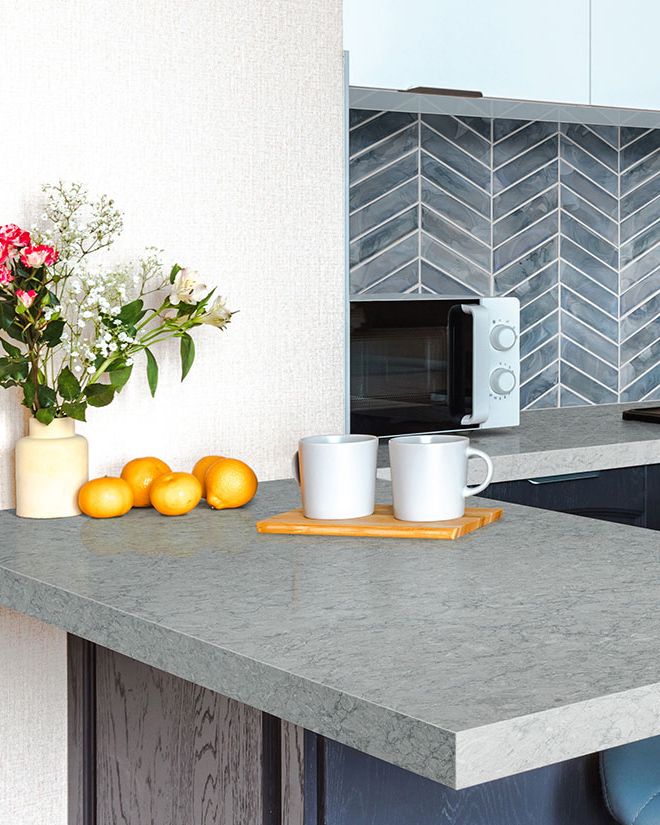
Granite-look quartz countertops are another popular style that combines the beauty of natural granite with the durability of quartz. These countertops feature patterns and colors that closely resemble natural granite, offering the same rich, earthy tones and intricate patterns. Granite-look quartz countertops are a great option for homeowners who love the look of granite but want the added benefits of quartz, such as its non-porous surface and resistance to stains and scratches. These countertops work well in traditional, transitional, or rustic kitchens.
Quartz countertops with bold patterns, such as large, sweeping veins or dramatic color variations, are a great way to make a statement in your kitchen or bathroom. These countertops are perfect for homeowners who want to add a wow factor to their space. Bold patterns can be used as a focal point, drawing attention to the countertop and making it the centerpiece of the room. Whether you choose a countertop with bold, contrasting veins or one with vibrant color swirls, this style is sure to make an impact.
A softer, more muted style is found in quartz countertops with subtle, understated patterns. These countertops feature gentle color variations and minimal veining, creating a more relaxed and soothing aesthetic. This style is ideal for homeowners who want a countertop that blends seamlessly with the rest of their design, rather than standing out as a focal point. Subtle patterns are often found in neutral colors like white, beige, or gray, making them versatile enough to work in a variety of design styles, from traditional to contemporary.

Matte quartz countertops are another popular option for homeowners who prefer a softer, more natural look. Unlike polished quartz, which has a high-gloss finish, matte quartz has a smooth, non-reflective surface that gives it a more organic feel. Matte quartz countertops are great for modern or minimalist kitchens, where a sleek, understated look is desired. They are also easier to maintain, as they don’t show fingerprints or smudges as easily as polished countertops.
If you’re looking for a countertop that combines both style and practicality, quartz countertops with built-in antimicrobial protection are an excellent choice. These countertops are treated with antimicrobial agents that help prevent the growth of bacteria, mold, and mildew, making them a hygienic option for kitchens and bathrooms. This added feature is especially beneficial for families with young children or anyone who prioritizes cleanliness in their home.
Finally, quartz countertops that incorporate metallic accents are a growing trend in modern kitchen design. These countertops feature flecks of metal, such as silver or gold, that catch the light and add a touch of glamour to your space. Metallic-accented quartz countertops work well in contemporary or luxurious kitchens, where a bit of sparkle can elevate the overall design. Whether used as a subtle accent or a bold statement, metallic flecks add depth and interest to quartz countertops, making them a great option for homeowners looking to make a stylish statement.
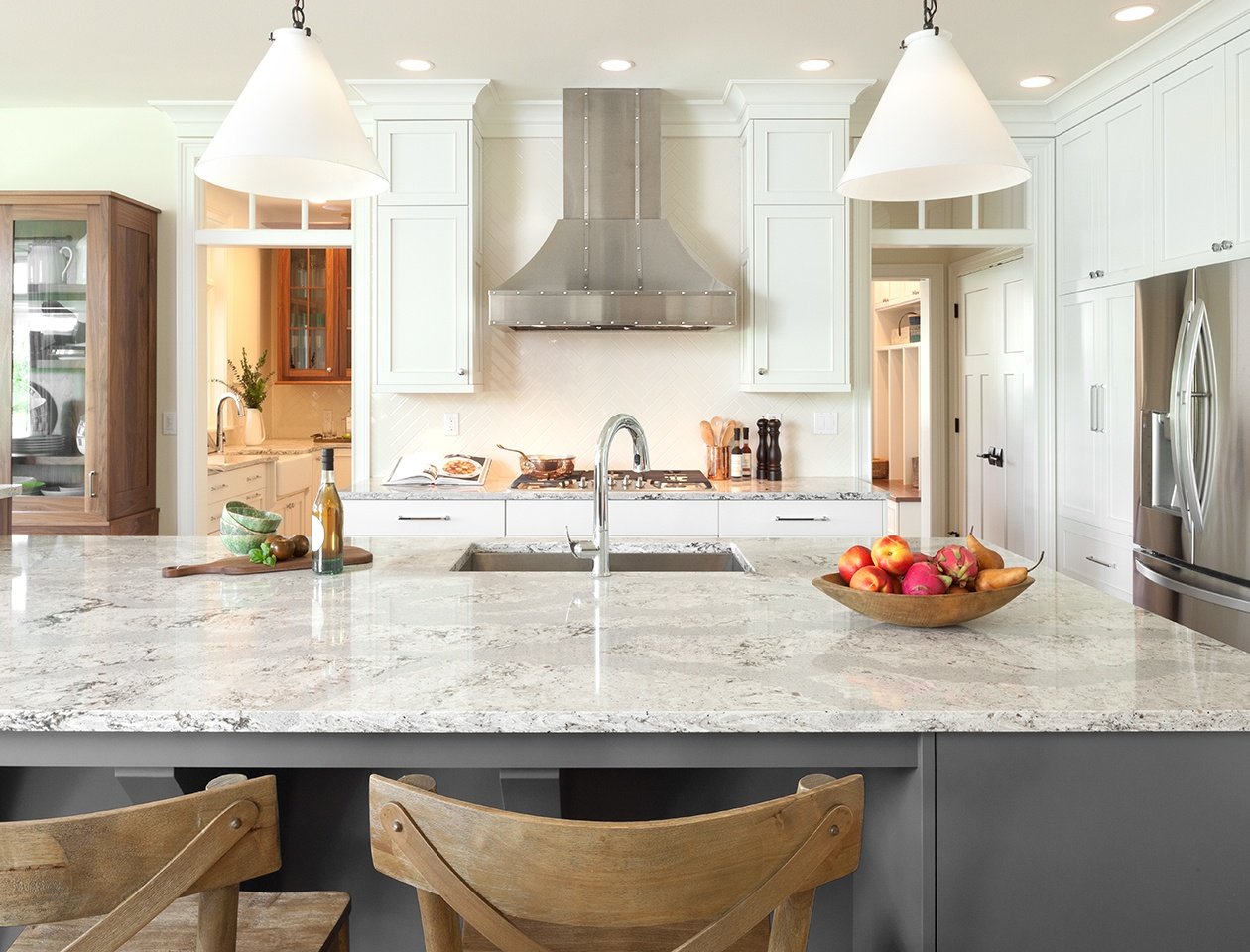
Common Mistakes to Avoid
One common mistake when choosing quartz countertops is not considering the overall design of your kitchen or bathroom. While quartz offers a wide range of styles, it’s important to select a countertop that complements your cabinetry, flooring, and backsplash. Another mistake is underestimating the importance of proper installation. Quartz countertops are heavy and require professional installation to ensure they are level and securely attached. Additionally, while quartz is low-maintenance, it’s important to avoid using harsh chemicals or abrasive cleaners, as these can damage the surface over time.

Are quartz countertops more expensive than granite?
While quartz countertops are generally comparable in price to granite, they can sometimes be more expensive depending on the style and brand. However, quartz offers several advantages over granite, such as being non-porous, which means it doesn’t require sealing. Quartz also offers more consistency in color and pattern, whereas granite is a natural stone and can have more variation.
How do I clean and maintain quartz countertops?
Cleaning quartz countertops is easy and requires only mild soap and water. Avoid using harsh chemicals or abrasive cleaners, as they can damage the surface. Quartz countertops are stain-resistant but not stain-proof, so it’s important to wipe up spills, especially from acidic substances like wine or citrus, as soon as possible. Regular cleaning with a soft cloth will keep your quartz countertops looking new.
Can quartz countertops withstand heat?
Quartz countertops are heat-resistant but not heat-proof. While they can handle moderate heat, placing hot pots or pans directly on the surface can cause damage, such as discoloration or cracking. It’s recommended to use trivets or hot pads to protect the surface from excessive heat.
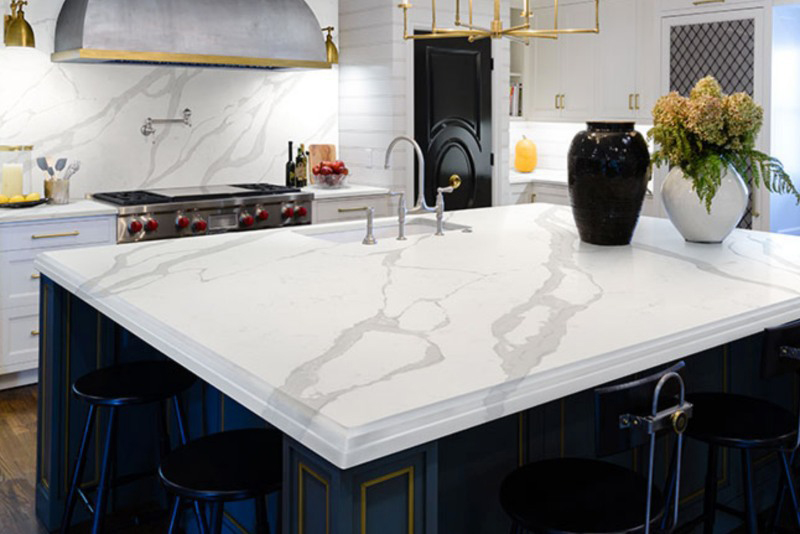
Are quartz countertops eco-friendly?
Yes, many quartz countertops are eco-friendly, especially those made from recycled materials. Recycled quartz countertops incorporate materials such as glass and ceramic that would otherwise end up in landfills. Additionally, the manufacturing process for quartz countertops typically uses less energy and water compared to natural stone options like granite and marble.
Can quartz countertops be repaired if they get damaged?
Minor damage, such as small chips or scratches, can usually be repaired by a professional. However, larger cracks or significant damage may require replacing the entire slab. While quartz is highly durable, it’s not completely immune to damage, so it’s important to use cutting boards and be mindful of heavy objects that could potentially cause harm.
Do quartz countertops fade over time?
Quartz countertops are resistant to fading, but prolonged exposure to direct sunlight can cause discoloration over time. If your quartz countertops are installed in an area that receives a lot of sunlight, consider using window treatments or UV-blocking film to protect the surface from fading. Most indoor settings will not experience this issue, but outdoor installations or sun-filled rooms should be monitored for color changes.
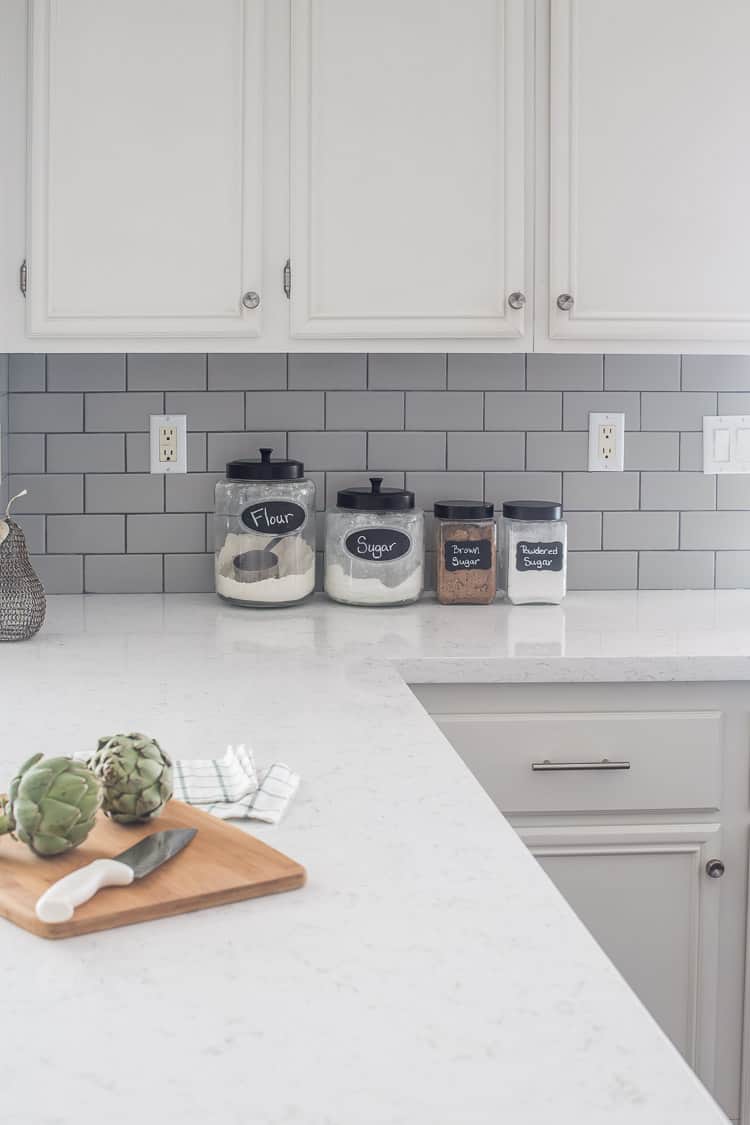
Related articles: